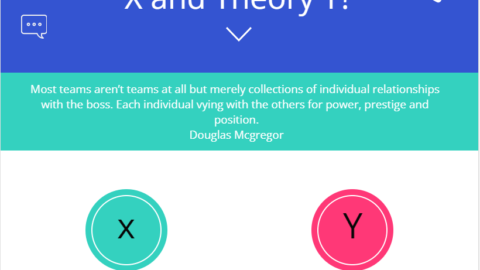What is Ensemble Learning?
Combining decisions taken from many different models to improve the overall situation or to make better decisions is called ensemble learning. By doing research, you gain access to different resources and models. You collect all the data and come to a general conclusion. As a result of all these studies and researches that you have done, the most appropriate result that you have reached is the result of ensemble learning. Ensemble learning is also known as machine learning and different ensemble learning techniques are available.
Table of Contents
Instance 1:
In order to understand ensemble learning or machine learning more easily, let’s explain this situation with a few examples. Our first example concerns a purchase incident. For instance, you went to a technology store to buy a computer. Can you immediately buy the computer model that the seller who works in the store you are going to recommend you to buy? The answer for most of you will be ‘no’ so what do you do before buying a computer? Most of us first of all study computer models from the Internet and study user reviews. We examine whether there are any defects with the computer and after a price-performance comparison, we buy the product we want.
Instance 2:
Another example of ensemble learning is related to the evaluation of a project you are preparing. For instance, you are working on a so significant project for your career. If you want to receive a preliminary notification before sharing this project with your administrators when you have completed your project. You can ask your friends’ opinions first to evaluate your project and make an objective comment. After the comments of your friends, you can refer to the comments of your colleagues. After your colleagues, you can also get the opinion of people you don’t know.
This way, you will have the opinions of many different people about your project. You will come to a conclusion according to what the general assessment is. This way you can see the pros and cons of your project more easily. This is also true in collective learning. Judging by the different opinions and reviews, you can come to a general conclusion.
Ensemble learning techniques actually keep deviation and variance errors to a minimum. With the ensemble learning model, the accuracy can also be increased to the maximum level. Ensemble learning methods use different classification resources for the same classification. In order to obtain a more accurate result, it refers to more than one source. Thanks to this technique, the dec of different classifiers are combined and the result is achieved. This technique, which is used, aims to obtain more accurate results by referring to different sources instead of a single source.
What are the Basic Ensemble Learning Techniques?
Ensemble learning techniques at the basic level or at the simple level are mod, average and weighted average. Mode is the most common number in a value dataset. A model is created to make predictions about each data point. Estimates made with models receive one vote. The model that receives the most votes is selected as the general model. In the average estimation, the average estimates formed by all models are examined and the overall result is reached. In the weighted average, data scientists determine a weight for each model. The weights determined for the models symbolize the level of interest of the model.
What is the Advanced Ensemble Learning Techniques?
Ensemble learning, also called machine learning, allows us to achieve more successful and accurate results using different models compared to a single model. In order to improve performance or make it more successful, it uses different models to achieve an overall result. We can also call this the creation of a common mind. Ensemble learning consists of two basic stages. These stages are bagging and upgrading.
1. What is Bagging?
It is one of the most used terms of the ensemble learning technique. The term bagging, or, as it is also called, pre-loading collection, was developed in 1996. This term, developed by Breiman, is aimed at minimizing the errors of variance contained in decision trees. At this stage, random samples of training datasets are created. The generated subsets are used for the training of decision trees. Thanks to the average estimate created using different models, the margin of error is minimized. The average forecast gives much more accurate results than the decision tree or a single model.
The following steps are followed in the bagging application:
- New and multiple subsets are created from the basic dataset.
- A weak model is created from each of the subsets.
- All created subset models work independently of each other.
- Data from all subset models are combined and a general conclusion is reached.
The bagging technique, which allows us to achieve more successful results compared to singular trees, makes them more efficient by using variables with high variance.
The algorithms used based on the bagging technique are as follows:
- Bagging meta-estimator
- Random Forest
2. What is an Upgrade?
One of the most preferred applications for ensemble learning and machine learning techniques is the upgrade. In the upgrade, different weights are given to the data set and inferences are made from the totality of the trees created in this way. At the beginning of the application, all observations are weighted equally, but as the tree community grows and develops, different weighting is performed. The weight of those who are misclassified is increased. Thanks to this, the trees are able to organize themselves. The upgrade technique follows the following ways:
- A subset is created from the basic ( original) dataset.
- At the first stage of the application, equal weight is given to the entire data set.
- Another basic model is created in the created subset.
- The base model of the newly created subset begins to make predictions for the dataset.
- Errors are detected by using the actual values and the predicted values together.
- Emphasis is placed on incorrectly predicted observations.
- Other than these models, another model is being created. New estimates are made in the data set.
- Multiple models are created. These multiple models created correct the errors of the previous model.
- The latest model consists of a weighted average of all the models produced.
The upgrade algorithms are as follows:
- AdaBoost
- XGBM
- GBM
Further Reading

Brantlee Bhide is a project manager at HB Consultancy. She has 16 years of experience working as a project professional across varying industries, countries, and cultures. She operates in both business and technical domains using an approach that she developed.










